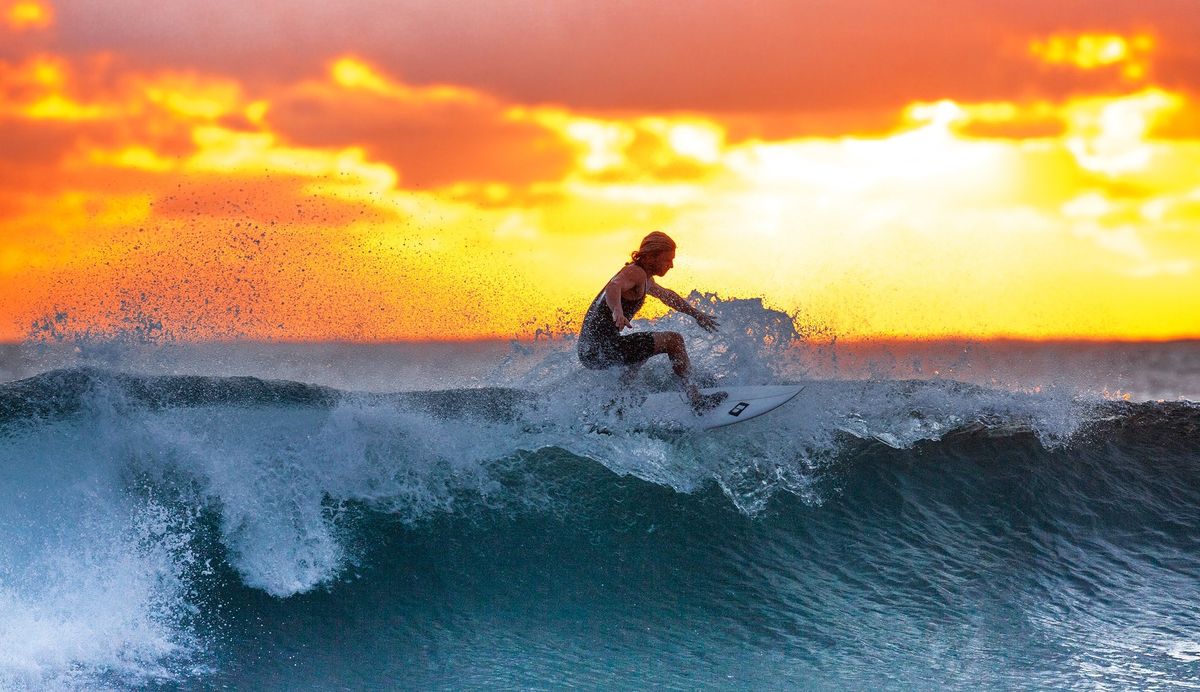For beginners looking to enjoy the best surfing in California – try learning longboarding outside the water

A few minutes every morning is all you need.
Stay up to date on the world's Headlines and Human Stories. It's fun, it's factual, it's fluff-free.
The best surfing in California beckons residents as well as visitors from across the United States. Some would even ask: are you a true Californian if you haven’t surfed at least once? The rest of the world would be astonished to know that many Californians haven’t even bothered to go to the beach. Even some who live along the coast don’t always seek out the ocean breezes and sandy feet.
Surfing intimidates both seasoned athletes and those new to the exercise. Fear of the ocean sometimes keeps people away from the sport, or the seemingly impossible task of riding a wave deters the underconfident. The exclusive California surfing culture found at local beaches might also strike fear in the hearts of newbies. Whatever your reason for fearing surfing, if you’re careful and learn properly, you’ll pop up on your board easily enough.
Choosing the right board
Most people have the ingrained idea of surfing as a ripped athlete racing through waves that curl in on themselves to form what surfers call a barrel. Beginners will have to wait for a barrel and for the shorter performance boards generally required to surf them. Short boards have a lower volume, which means they sacrifice stability for agility. If a beginner grabs any board under 6’6” for their first time, they’ll spend all their time rolling around in the waves instead of riding them.
A board with a lot of volume will float with greater ease and allow you to pop up on your board and catch a few waves. A longboard is the safest bet for your first time. Though they often reach heights above 9’, longboards fly through the water with a grace that short boards generally don’t possess. Though they don’t turn as easily as a short board, longboards have a more relaxed and less aggressive surf style (but that doesn’t mean it’s not difficult or a workout).
Even if you chase after adrenaline and prefer more aggressive workouts, longboarding will make for a smoother transition to a shorter board, and it will allow you to focus on your technique instead of crashing around in the waves. Another benefit to learning on a longboard is that surfers of all levels love longboarding. Ever heard of cross-step or hang ten? Both are longboard terminology for old school surf tricks.
To cross-step you simply walk your feet back and forth on the board by crossing one foot over the other. To hang ten you work your way to the tip of your board and let your toes hang off the edge. Before you enter the water, you can progress from beginner to a cross-stepping pro in no time if you practice and use these land-based tips to master your technique.
Longboarding for beginners
First rule for beginners: don’t be a kook. Whatever a kook is, it doesn’t sound good. That’s what you’re thinking, right? You’d be correct. A kook makes all kinds of surfing faux-pas, whether because they don’t care or they aren’t familiar with surf etiquette. Their surfing is subpar, to say the least.
Basic surf rules include knowing your limits and always keeping track of your board. Ignoring your limits can put you and others in potentially dangerous situations. Respect the ocean and don’t underestimate its power. Don’t surf a wave too big for you, and don’t go out on the water alone. Make sure you have a surfboard leash to attach to your ankle. Rogue boards can hit other surfers. Most importantly, never drop in. Known as the cardinal sin of the sport, dropping in is when you take off on a wave that another surfer has already started to ride. It can cause serious collisions. Plus, it’s just rude. Keep these rules in mind before heading out.
Learning on land before you hit the waves
While you’re still on land, you can pick up another activity that will help you master the art of longboarding. The most obvious option is longboarding on pavement. The range of shapes and styles for skateboards ranges from 36” pintail and drop-through longboards to 60” logger boards designed specifically for surfers to practice on land. Check out surf skate boards if you want to practice specifically for longboarding waves, but any longboard will improve your balance and your carving. Check out some of the best places to longboard in California to hone your craft before heading out to sea.
For a stay-at-home option that you can practice any time of day, even while watching TV, working at your computer or attending Zoom University, take a look into balance boards. You place a board on top of a long cylindrical base and balance as long as you can. Most balance boards place the boards perpendicular to the base, but California companies Ebb&Flo and Goofboard have created a rail-to-rail balance board to simulate the experience of surfing a wave. Designed by surfers for surfers to enhance your longboarding performance, these balance boards help with both balance and technique. If you aim for style and fluidity in your surf, then the bamboo Ebb&Flo is a must. The retro hull shape not only looks amazing, it moves just like a surfboard. Pro tip: control the board from your ankles instead of shifting your weight.
Once you’ve given these tips a try, you’re ready to hop in the water with a more experienced friend to guide the way. Rent a board or invest in a stylish longboard if you’re determined to transform into a classic Cali surfer. Some of the best California surfing awaits as you work on your new craft.
Have a tip or story? Get in touch with our reporters at tips@themilsource.com




Comments ()